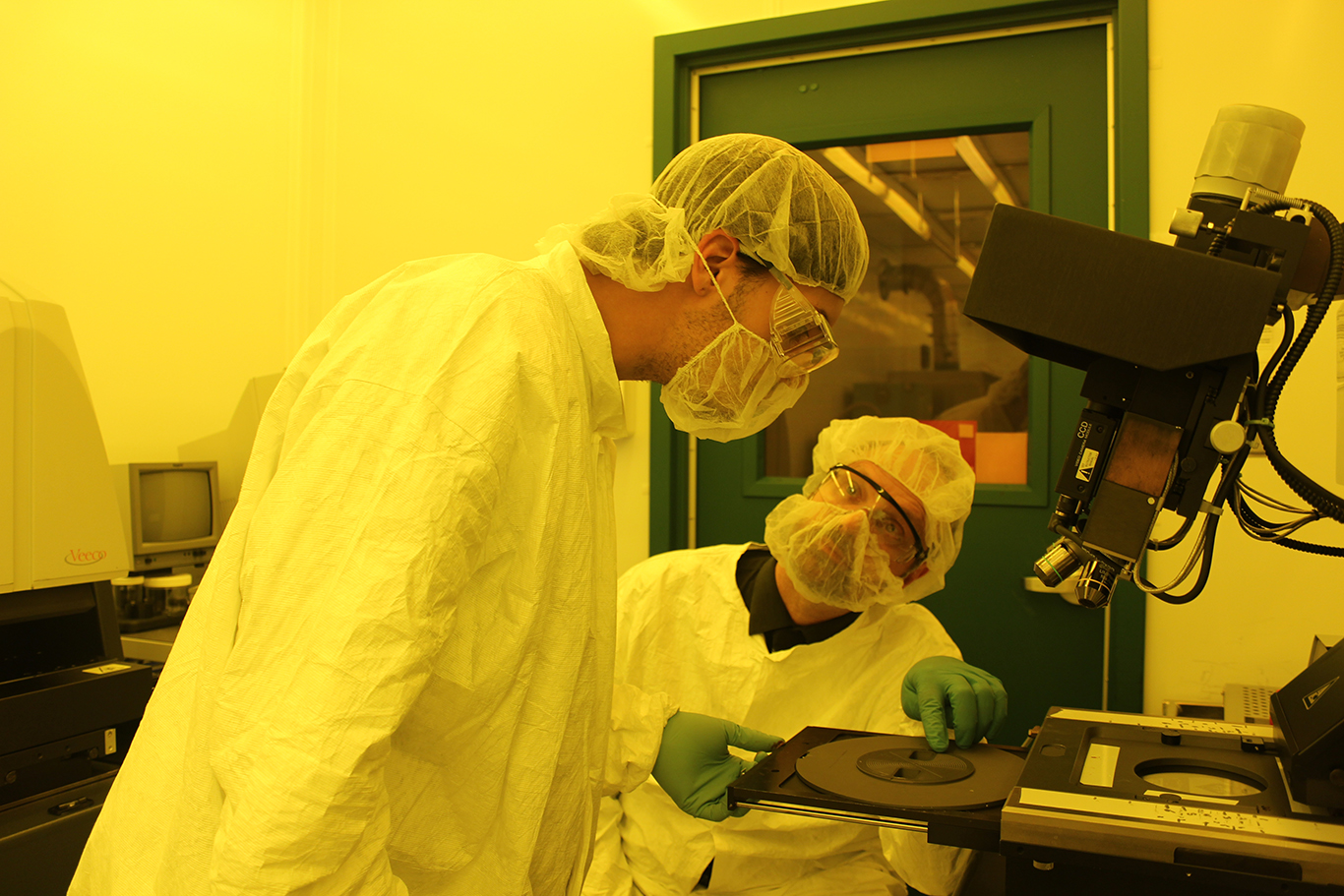Recent News
UNM Engineering team wins ASEE best paper for work on first-year engineering course
July 17, 2025
New director will enhance interdisciplinary engineering learning opportunities
July 2, 2025
Final SIRI cohort visits UNM campus
June 30, 2025
Perfetti receives ANS Landis Engineering Achievement Award
June 26, 2025
News Archives
UNM awarded $1.6 million NSF grant to extend microsystems education
April 4, 2017 - By Kim Delker
The University of New Mexico has been awarded $1.6 million from the National Science Foundation to continue a successful program to provide educational materials and services to industry trainers and educators on the growing science and technology of microsystems.

The grant, which begins July 1, 2017, and runs through June 30, 2021, will fund the creation and maintenance of a wide variety of microsystems educational materials used by colleges, educators, and industry members across the nation. This is a continuation of previous NSF grants for the initiative, called the Southwest Center for Microsystems Education. For nearly a decade, UNM has been working under NSF grants to develop technical training materials and develop outreach modules. This latest grant will focus specifically on converting those materials into an online format, creating a support center for those in the microsystems industry.
Matthias Pleil, a research professor and lecturer in the Department of Mechanical Engineering, is principal investigator on the grant. Co-principal investigators are John Wood, professor of mechanical engineering, and Daniel Kainer and Pamela Auburn, both of Lone Star College in Houston.
“The focus of the grant is to support the integration of our educational materials into technician programs and support the growing microsystems industry,” said Pleil. “One of the things we’ll be doing in the next four years is to create online short courses based on these materials. We have about 50 or so learning modules and will be putting them online so that instructors can use them in their classrooms with their students.”
Gabriel Lopez, UNM vice president for research, said that this project will have a major impact.
“This important award from the NSF’s Division of Undergraduate Education will greatly enhance UNM's ability to educate technicians and undergraduates to participate in New Mexico’s emerging high-technology manufacturing sector and thus has significant potential for economic impact in our state,” Lopez said. “Dr. Pleil and his team have assembled an excellent set of partners to execute the project's mission, including small local companies such as HT Micro and large corporations such as Honeywell and Texas Instruments, and Sandia National Laboratories is also an important partner. Through its online programs, the SCME will also have a national scope and impact, thus significantly leveraging UNM’s educational mission to make it an educational leader in the area of microsystems manufacturing.”
Microsystems, also known as microelectrical mechanical systems (MEMS), are in many devices used daily, including smartphones, gaming consoles, medical devices, and autonomous vehicles.
“The microsystems industry is growing at a fast rate, with about a 14 percent compounded annual growth,” Pleil said. “Microsystems enable us to do a lot of things, and they are found in popular wearable devices that can track our location, sleep, and activity levels through micro accelerometers and pressure sensors. Smartphones, and the Internet of Things with all its integrated sensors also include these devices. It is therefore necessary to provide educators the background needed to prepare their students to succeed in the high-tech workforce that make, design and integrate these gadgets.”
Pleil said a lot of technical colleges and universities currently use their educational materials, and they also will be working to develop additional classes and resources that are available to students, not just instructors, so that students, technicians and workers can also educate themselves. One major component of this grant will be working with Lone Star College to help them integrate the SCME bioMEMS and fabrication units into their biotech, nanotech and chem-tech technician programs.
They also have hands-on kits, sold on their website, that help instructors teach students and follow along effectively with the training materials, he said.
The center’s materials also teach students about cleanroom safety, manufacturing, and fabrication, which is of interest to those in advanced manufacturing, since these devices are mostly made in cleanrooms, Pleil said. Classes and workshops are held in UNM’s Manufacturing Technology and Training Center cleanroom so that students and educators can get an authentic experience.
So far, UNM’s impact has been significant in this area. Pleil said the center has extensive materials on their website that are free for download. He said the learning modules get about 6,000 downloads a month, and their YouTube channel has about 45 or so videos, which so far have gotten about a half-million views.
“Probably 80 percent of impact we don’t even know about,” Pleil said. “We track student hours [instructional time multiplied by number of students impacted based on instructor surveys], and we have several hundred thousand hours. We’ve tracked about 40,000 IP addresses that have downloaded materials over the years and 300,000 downloads, so the users come back, which indicates they find value in our work. It’s mainly from the U.S., but we also have downloaders from Europe, India, China, and Africa.”
Pleil said they will continue to support their current partners, as well as develop new partners, especially in industry whose technicians and new engineers could benefit from the online training in microsystems.
